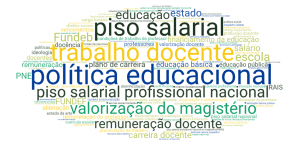ORIGINAL ARTICLE
SILVA, Américo Junior Nunes da [1], SILVA, Rafaela Laranjeira [2], RIBAS, Ricardo Fabrizio da Rocha [3]
SILVA, Américo Junior Nunes da. SILVA, Rafaela Laranjeira. RIBAS, Ricardo Fabrizio da Rocha. The Mathematics Education Laboratory and Teacher Training: What Do Future Teachers Reveal? Revista Científica Multidisciplinar Núcleo do Conhecimento. Year 09, Ed. 01, Vol. 03, pp. 70-106. January 2024. ISSN: 2448-0959, Acess link: https://www.nucleodoconhecimento.com.br/education/education-laboratory, DOI: 10.32749/nucleodoconhecimento.com.br/education/education-laboratory
ABSTRACT
This article, resulting from a qualitative investigation and a case study, aimed to understand the conceptions of future Mathematics teachers regarding the Mathematics Education Laboratory (LEM), as well as the reflections of the activities developed in this space for the improvement of initial training and for classroom practice. The study involved 28 students from the Mathematics Teaching Degree Program at Campus IX of the State University of Bahia and a professor associated with the course since its creation. Data production instruments used included documents provided by the Núcleo de Pesquisa e Extensão (NUPE); interviews, and questionnaires. Among the main results, it is highlighted that there is underutilization of the laboratory space, which reverberates in the construction of mistaken and superficial conceptions by future teachers regarding its use.
Keywords: Mathematics Education Laboratory, Mathematics Teaching and Learning, Teacher Training.
1. INTRODUCTION
More and more, the Mathematics Education Laboratory (LEM) is present in studies that address spaces and materials that assist in the teaching-learning process. In this perspective, this work aimed to highlight the contributions of its use to the training of Mathematics teachers, as it is responsible, in many courses, for the articulation between the different knowledge necessary for teaching (Souza; Silva, 2021; Silva, 2014).
It is, therefore, a space that promotes a redefinition of teacher training and the teaching-learning process, occurring in an intertwined manner. In a scenario where Mathematics is seen by many students as difficult and disconnected from reality, it allows investigations that can make this science more attractive and understandable, something that can directly impact the relationship that many students build with this science. It is, therefore, an important training structure for [future] teachers (Silva, 2020a).
The LEM is a space where students and teachers can perceive the inseparability between theory and practice, constituting an ideal environment for professional development and learning Mathematics by doing it, ensuring the pleasure of discovery (D’Ambrósio, 1993). Regarding the initial teacher training, the various teaching, research, and extension activities offered by this space can favor and strengthen the professional constitution and pedagogical practices of future teachers (Silva, 2020a; Silva, 2023; Silva et al., 2023).
Within this context, starting from the important place occupied by this space, we aim to answer the following research problem: What do students in the Mathematics Teaching Degree Program at Campus IX of the State University of Bahia – UNEB conceive regarding the Mathematics Education Laboratory and the implications of the activities developed in this space for initial training and teaching practice? In the meantime, we aim to understand the conceptions that future teachers present regarding the Mathematics Education Laboratory and the reflections of the activities developed in this space for the movement of initial training and practice in the classroom with Mathematics, aiming at expanding the studies of the relationship between the LEM and the initial training of teachers in the field.
This article, a segment of a Final Course Paper, structured itself in an attempt to be better understood as follows: i) initially, in the Theoretical Foundation, there are elements of discussion that broaden the view of the object of study and also mobilize important points for the process of analyzing the data produced; ii) next, in the Research Methodology section, the procedures for the constitution of this study are presented, especially considering the rigor necessary for the realization of works of this nature; iii) in the Data Analysis section, on the other hand, and as the title suggests, an analytical movement is made between the theoretical discussion constituted and the data produced with the field study carried out; iv) finally, in the Conclusion section, conjectures are constructed at the end of the text.
2. THEORETICAL FOUNDATION
We know that the contents covered in Basic Education are essential for the social formation of the individual, as made clear by the National Common Curriculum Base (Brasil, 2018) and the Curricular References of the State of Bahia (2019). We conjecture that mathematical literacy is essential for understanding various everyday situations and for exercising citizenship. The obstacles faced throughout history, especially regarding teacher devaluation and the lack of continuous policies aimed at the quality of Brazilian public education, as evidenced by Silva (2014), have contributed to the consolidation of a scenario of disregard, also in relation to the teaching and learning of Mathematics. It is essential that this image be undone, so that students can perceive the connections between the concepts studied and their reality.
According to Félix Klein (2009), the school plays a fundamental role in the production of mathematical content, as does the academy. For him, the school establishes the cultural terrain that determines the paths leading to the production of new knowledge. The way Mathematics is taught in schools will influence the development of science in the country. In this direction, according to Giraldo (2018, p. 39), “[…] we understand the school as a place of knowledge production, and not simply transmission”; it is a place where teaching practices undergo constant changes and mathematical concepts are always re-signified.
Still, based on what has been revealed by the previously referenced authors, we understand that for teaching to truly promote mathematical learning, it is necessary to understand that the teacher has knowledge that is constantly transforming, adapting to the specific demands of situations that occur in their professional daily life. In different experiences, training spaces aggregate, and these knowledge are (re)signified. Thus, the teacher can discover themselves as individuals who promote the transformation of reality, creating conditions for students to be co-responsible for their learning.
It is important for teachers to create strategies to promote mathematical knowledge. As intellectuals and responsible for creating learning situations, by elaborating meaningful teaching forms, they transform students’ relationship with Mathematics. The use of didactic materials is important, according to the National Common Curriculum Base (Brazil, 2018), and these are understood as instruments that favor teaching, assisting the teacher in teaching-learning activities (Lorenzato, 2010).
However, it is noticeable that there are still many issues that do not allow what we have previously highlighted to become a reality. These numerous problems permeate initial training when considering its importance in shaping the identity of future teachers, and also, specifically in Brazilian education, the problem related to the lack of national appreciation for teachers, making the search for teacher training even scarcer (Silva, 2014).
When a person enters a teacher training course, they bring with them the experiences they have built throughout their life, as well as their trajectories in basic education. These experiences can be positive or negative, but all of them will, directly or indirectly, influence the construction of their teaching identity. Discussions and reflections are of utmost importance, challenging the teacher in training to continuously develop and improve their way of socializing knowledge. It is during initial training and experience building that the teacher begins to envision themselves as a teacher (Silva, 2014; Silva, 2020a; Silva, Souza, and Fonseca, 2021).
Teaching requires specific knowledge and expertise. Understanding this happens throughout the initial training process, allowing the construction of different skills and the constitution of new knowledge and experiences. In the initial training of the future teacher, it is essential to have the possibility of understanding and knowing different pedagogical methodologies, related to the social context in which students are involved. Therefore, Silva (2014, p. 50) states that “[…] first and foremost, it is important to say that, in the constitution of these knowledge, as well as throughout the teacher’s training process, social issues are involved that cannot be ignored.”
According to Shulman (2014), teaching practice is linked to some bases of knowledge. In the past, it was believed that for teaching practice, it was only necessary to master the contents and pedagogical skills to transmit knowledge. However, teachers themselves faced difficulties in creating situations to mediate this knowledge. With the development of practices, the advancement of studies and research, Shulman (2014) mentions that there are at least four major bases of knowledge still valid, which are:
(1) formação acadêmica nas áreas de conhecimento ou disciplinas; (2) os materiais e o entorno do processo educacional institucionalizado (por exemplo, currículos, materiais didáticos, organização e financiamento educacional, e a estrutura da profissão docente); (3) pesquisas sobre escolarização, organizações sociais, aprendizado humano, ensino e desenvolvimento, e outros fenômenos sociais e culturais que afetam o que os professores fazem; e (4) a sabedoria que deriva da própria prática. Permitam me estender-me sobre cada uma dessas fontes (Shulman, 2014, p. 12).
Shulman (2014) concludes that there is no fixed and definitive knowledge base for education, with some arguments covering broad categories of teaching knowledge. However, it is noticeable that many of them still lack discoveries and refinement. Despite this, we believe in the potential of researchers and teachers, individuals capable of defining, describing, and positively reproducing education.
Santos and Cardoso (2013) emphasize that to develop individuals capable of reflecting on lived reality, the educator must be prepared for the task. Training is a process that occurs collectively, and social transformation is expected. Therefore, the university needs to modernize, realizing that social changes require education beyond traditional teaching methods. It is necessary to constantly seek new knowledge and update one’s own expertise, understanding the impacts of technologies (Silva, 2020b).
When considering the difficulties encountered in schools, based on how students perceive Mathematics, we understand how important teaching methodology and practices are in the teaching-learning process. It is essential to consider that this process is not limited to the school environment, much less to specific contents. It is necessary to realize that learning is constructed in socially, historically, and culturally situated relationships (Silva, Souza, and Fonseca, 2021).
As Silva, Souza, and Fonseca (2021) assert, the teaching of Mathematics needs to be constructed and redefined daily, especially as it plays a fundamental role in civic education, developing logical thinking and specific skills such as analyzing, evaluating, interpreting, arguing, making decisions, and thus having an expanded view of their reality.
The Mathematics Education Laboratory is thus a space that allows the future teacher to approach various formative pathways, intertwined with the school reality, impacting their training and professional development. According to Silva, Souza, and Fonseca:
O LEM é um espaço potencialmente promotor de vivências lúdicas, ao potencializar, através de materiais concretos e digitais, a interação e o movimento pendular que intercruza a teoria e a prática. A depender da forma como é conduzido pode se distanciar de práticas lineares e, muitas vezes, sem significados, algo ainda muito comum nas escolas da Educação Básica (Silva; Souza; Fonseca, 2021, p. 3).
It is worth considering that, based on what has been highlighted so far, the Mathematics Education Laboratory (LEM) is a space that brings together various types of teaching materials. Therefore, it is in this space that future teachers can experience teaching practices, redefining them based on the school reality and trying to contribute to student learning. With the Basic Education school still at the center, it serves as a research site, aiming to contribute to both the school context and Higher Education.
In this journey, the LEM can also enable systematic reflection on classroom experiences, leading to a reconsideration of the school curriculum, which, in some cases, involves the construction and adaptation of teaching materials. Thus, Lorenzato (2010) asserts that this space can be conceived as
[…] uma sala-ambiente para estruturar, organizar, planejar e fazer acontecer o pensar matemático, é um espaço para facilitar, tanto ao aluno como ao professor, questionar, conjecturar, procurar, experimentar, analisar e concluir, enfim, aprender e principalmente aprender a aprender (Lorenzato, 2010, p. 7).
The Mathematics Education Laboratory (LEM) has various potentials, being able to function as a space for the initial or ongoing training of mathematics teachers. It can promote activities related to teaching practice, such as conducting pedagogical workshops where teachers can reflect on their experiences and exchange knowledge. In addition to allowing reflection on the classroom and the curriculum, it promotes the production and validation of materials, the construction of didactic sequences, the conduct of weekly studies, and can become a research site for teaching activities (Silva, et al. 2023).
In this context, the LEM is a place of ongoing education, as it provides various situations that lead the teacher to reflect on their pedagogical practice and creates opportunities for an engaging mathematical learning experience for students. These points need to be explored during the initial training, i.e., during the undergraduate program, for the future teacher to analyze how they will assist the student in the teaching-learning process (Silva, 2020a, 2020b).
3. RESEARCH METHODOLOGY
To begin this section and based on what Gil (2002, p. 17) reveals, we state that “research is developed through the contribution of available knowledge and the careful use of methods, techniques, and other scientific procedures.” To answer a given research question, for example, careful consideration and rigor in data production processes are necessary. The approach of a study, therefore, is related to the objectives and guiding conceptions of the investigation. Thus, there is a relationship between the constitutive elements of research.
This study is structured as a qualitative approach, guided by what Ludke and André (1986) revealed, given the empirical situation that intertwines with it. According to the authors, in this methodological perspective, researchers must become the most reliable instrument for observation, analysis, and interpretation of collected information.
The literature review relied on the main studies of Silva (2014, 2020a, 2020b, 2023), in addition to contributions from Lorenzato (2010), Shulman (2014), and others. These researchers discuss teacher education from different perspectives, allowing insight into our object of study. It is characterized as a case study, which can be defined as follows:
Os estudos de caso buscam retratar a realidade de forma completa e profunda. O pesquisador procura revelar a multiplicidade de dimensões presentes numa determinada situação ou problema, focalizando-o como um todo. Esse tipo de abordagem enfatiza a complexidade natural das situações, evidenciando a inter-relação dos seus componentes. (Ludke; André, 1986, p. 19)
The research focused on investigating the Mathematics Teaching degree program at Campus IX, UNEB, located in the city of Barreiras, in the state of Bahia. The subjects under investigation included students from the mentioned program, with criteria for participation being in the final semesters of the course and having experienced an internship or some other theoretical-practical articulation, such as the Programa Institucional de Bolsa de Iniciação à Docência (PIBID) or Pedagogical Residency, for example.
To achieve the central objective of the research, which was to understand the conceptions that future teachers present regarding the Mathematics Education Laboratory and the reflections of the activities developed in this space for the movement of initial training and practice in the classroom with Mathematics, the following specific objectives were structured:
i) To provide a historical account of the Mathematics Education Laboratory space at UNEB, Campus IX;
ii) To identify the conception of pre-service Mathematics teachers, future educators trained at Campus IX of UNEB, regarding the Mathematics Education Laboratory;
iii) Analyze, based on the produced data, the influences of the proposed training itineraries at Campus IX of UNEB on the initial and future professional practice formation.
From these specific objectives, methodological approaches were established.
In the quest to historicize the LEM space at Campus IX, a documentary research was conducted around the Course Recognition Project, institution files, and various records containing information about its historical trajectory. An interview was also conducted with a professor who participated in the creation of the course and remained involved until the time of the research.
Finally, to identify the students’ conceptions, future Mathematics teachers, regarding the LEM space and its influences on initial and future professional practice formation, a questionnaire was administered to the course students. The questionnaire, as described by Gil (1999), is an investigation technique consisting of written questions presented to the participants, aiming to understand opinions, beliefs, feelings, interests, expectations, lived experiences, etc.
This questionnaire contained 12 questions and was proposed to 33 students in the semester of 2022.2. Of these, 28 agreed to participate in the research, signing the Informed Consent Document (ICD). It is noteworthy that all ethical issues were respected, including the anonymity of the participants. Therefore, for this reason, we will use other forms of identification rather than their names[4].
The final stage of the research consisted of conducting an analysis, following the parameters of qualitative research, regarding the elements and contents obtained in the data production, in order to answer “what do students of the Mathematics Teaching Course at Campus IX of UNEB conceive regarding the Mathematics Education Laboratory and the implications of the activities developed in this space for initial training and teaching practice?”
Thus, we must highlight what we understand by “conceptions” at this moment and for this text, based on Cury (1999), as a set of ideas formed from experiences lived by people. For example, “[…] the knowledge they have built, the opinions of their teachers, and, finally, the sociocultural influences they have experienced throughout their lives, influences that have been forming over the centuries, passing from generation to generation […]” (Cury, 1999, p. 37).
The data analysis, being faithful to the established path here, was guided by a qualitative perspective, based on what Gil (2007) proposes, highlighting that this process involves data reduction, categorization, interpretation, and, finally, writing the final research report. In this case, it is the Final Course Paper.
In this sense, aiming to present the analysis process in more detail, it is worth noting that, in the first stage, we treated the responses that were closest to the objective of this research. Then, in the categorization, we organized this data, aiming to understand the raised aspects and their interactions, attempting to carry out the interpretation and raise new questions or hypotheses. In the final writing stage, we present the results achieved by the study.
4. DATA ANALYSIS
4.1 HISTORY OF THE LEM SPACE AT CAMPUS IX
As part of the main objective of this research, which is to understand the future teachers’ conceptions regarding the Mathematics Education Laboratory and the reflections of the activities developed in that space, we chose to initially gather information about the historical trajectory of the Mathematics Education Laboratory (LEM).
According to the Course Recognition Project (UNEB, 2017, p. 107): “The Mathematics – Teaching Degree course at UNEB – Campus IX/Barreiras was created and authorized by Resolution CONSU No. 288/2004, published in the Diário Oficial of July 23, 2004.” The implementation arose from the need to include more course options at the Barreiras campus. At the time of creating the course, the Mathematics Education Laboratory, initially intended to provide technological support to Mathematics students for study and research activities, was also established.
According to the interviewed professor, methodological tools such as geometric solids, mathematical games, and others were introduced to the space by the pioneer classes of the course, during the Laboratory Teaching of Mathematics and Mathematics Didactics classes. Subsequently, additional materials were acquired through projects and donations, although no documents or records were found.
In this sense, it is important to discuss the composition of this space, which, for us, as revealed throughout the theoretical discussion and supported by Silva (2014), constitutes a place of training and is important for the formation of the teaching identity. Note that, up to this point, the idea of the laboratory as a space that brings together various instruments and teaching materials, such as games, solids, computers, etc., is formed, as also highlighted by Lorenzato (2010).
However, we must question: what kind of activities were carried out in this space? How did the education students engage with the proposed activities and connect with Basic Education classrooms? How were students invited to explore the possibilities of the laboratory? Our questions are based on the understanding of the necessary relationship that must exist between the LEM and the “chão da sala de aula” of the school (Silva, 2014; Silva, 2020a; Silva, 2023).
Therefore, based on these provocations, we sought the history of projects developed over the years, linked to the Mathematics course, from the Research and Extension Center of the Department, to expand our understanding of the teaching, research, and extension practices carried out and their impact on the teacher’s training who will teach Mathematics. In this way, we also sought to analyze the relationships between students and the laboratory, beyond the curriculum components. After all, according to Lorenzato (2010), the construction of the LEM must be a group consequence, an achievement of teachers, administrators, and, especially, students.
Since the creation of the Mathematics course, research, extension, and teaching programs and projects have been developed, and those related to the laboratory will be presented below, as stated in the Course Recognition Project (UNEB, 2017, p. 200).
Based on the Course Recognition Project (UNEB, 2017), we see that, for ten years (2007-2016), there were five proposals/projects involving the laboratory, each developed by a specific professor, with the participation of students as monitors or target audience. It is worth considering that two of these proposals were focused on material production, one on the redefinition of didactic resources, one on itinerancy and taking materials to municipal public schools, and the other on the contributions of the curricular component Laboratory of Mathematics Teaching I to the training of future teachers.
The first recorded project was titled “Laboratory of Studies and Research in Mathematics Education,” coordinated by a campus professor from 2007 to 2009 and executed with the support of student monitors from the Mathematics teaching degree program. This project was aimed at students of the course and aimed to organize and promote laboratory actions as a workspace, research, and material production.
It is worth noting that, in 2010 and 2011, this project was taken over by another professor and sought to reach a larger audience, including Elementary and High School teachers, researchers, scholars in the field, and students from the Mathematics and Pedagogy courses. This edition was carried out by a professor and a student monitor, aiming to promote studies and research focused on the production of material in the areas of Mathematics, games, and problem-solving.
In 2012, the project “Laboratory of Studies and Research in Mathematics Education (Lepem)” was carried out, proposing the redefinition of the use of didactic resources and the laboratory space. It was developed by professors and students from the Mathematics course, targeting students from the Mathematics and Pedagogy courses, as well as teachers in Basic Education.
The Course Recognition Project (UNEB, 2017) registers the project “Contributions of the Laboratory I component to the training of future teachers,” carried out punctually in one academic semester in 2015. The coordinator of the project was the professor who taught the component during that period and had the participation of a teaching assistant. It was focused solely on students enrolled in the component and aimed to build a culture of cooperation within the university, emphasizing the importance of learning to live together.
It is important to consider that the three proposals developed from 2007 to 2014 reveal a conception of the laboratory as a place of training, as evidenced by Silva (2014, 2020a, 2020b, 2023). These projects have, as their central focus, the recognition and the need for the consolidation of a physical space that, beyond bringing together various teaching materials, is a place for teacher initiation, training, and the constitution of the teaching identity, intertwining teaching, research, and extension; something different from what was presented in the project carried out in 2015, which focused on teaching and involved only students in the Mathematics teaching degree program, disconnected from the “school floor,” as described and occurred in the previous proposals (Silva, 2023).
In 2016, the project titled “Laboratório Itinerante para o Ensino e Aprendizagem de Matemática – LIEAM” was carried out. This project, as stated in its proposal, sought to mobilize Mathematics teaching degree students to, armed with materials provided by the laboratory, establish connections with municipal public schools offering the final years of Elementary Education. The focus was not only to enable teacher training regarding the understanding of the use of various teaching materials but also to redefine how Mathematics was perceived by Basic Education students, especially considering the presentation and manipulation of materials.
Respaldados nesse levantamento inicial, resolvemos buscar outras propostas, desenvolvidas durante o curso e que se vinculavam ao Laboratório, nesses projetos apresentados anteriormente. Vejamos o encontrado, no Quadro 1, a seguir:
Table 1 – Projects related to the Mathematics Education Laboratory (LEM)
| TYPE | TITLE | YEAR |
| Extension | Using Curiosities and Mathematical Games in the Classroom | 2010 to 2011 |
| Research | Pedagogical Knowledge of Mathematics Teachers | 2011 |
| Extension | The Development of Logical Reasoning through Chess | 2013 |
| Extension | Meeting of Playfulness and Mathematical Education | 2014 |
Source: Developed by the authors based on data provided by the Núcleo de Pesquisa e Extensão, 2023.
In the meantime, starting from Table 1 and the information provided in the mapped projects, it is important to consider that many of these actions brought visibility to the Laboratory and the materials it possessed, allowing students to engage in mathematical processes and prompting a rethinking of Mathematics teaching by both prospective and practicing teachers.
For instance, the extension project titled “Utilizing Curiosities and Mathematical Games in the Classroom,” as mentioned earlier, was conducted with teachers from the municipal public school system in Barreiras and, in another edition, with students from the teaching course. In general terms, the project proposed a redefinition of Mathematics teaching through the production and use of mathematical games.
Continuing in the execution of extension proposals, considering the configuration of Lepem from 2012 to 2014, the project aimed at redefining the laboratory space and acquiring various materials, including in partnership with the University of Brasília (UnB). Thus, through the acquisition of chess games, it offered the university and external community the opportunity to learn to play and participate in tournaments with the project “The Development of Logical Reasoning through Chess.”
During this period, the laboratory constituted itself as an umbrella project, and other teaching, research, and extension projects were linked to it. In this regard, it is worth noting the implementation of Laboratory Teaching Assistance for two semesters, the approval of the Programa Institucional de Bolsas de Iniciação à Docência (Pibid), with a theme and training focused on the Laboratory, which managed to obtain 30 teaching initiation scholarships at the time, and the implementation of research such as the one entitled “Pedagogical Knowledge of Mathematics Teachers,” which involved research faculty from two courses, Mathematics and Pedagogy.
It is important to emphasize how, during this period, the laboratory acted as a training space (Lorenzato, 2010), whether for teachers in training or in service in the municipality and identity territory. The institutional partnerships established, such as with the University of Brasília (UnB), demonstrate the established potential, including the organization of events such as the “Meeting of Playfulness and Mathematical Education.”
Regarding the physical space, according to the interview with the professor, the laboratory was initially located in the Laboratory Complex of the Department. However, the LEM was transferred to the Pavilion of Classrooms of the Freire Platform shortly after its construction, which resulted in an expansion of the space. It is important to note that during the years from 2010 to 2014, when the previous survey was conducted and presented in Table 1, the LEM was still located in the Laboratory Pavilion.
It can be observed, based on the records, that from 2016 onwards, the projects developed in the laboratory did not continue. During a visit to the space, we noticed that the computers had been unused for a long time, many games were damaged, some even covered in dust, and the air conditioning unit was not functioning. These indicators allow us to infer that the space was no longer being used with the frequency it once had.
4.2 DESCRIPTION AND ANALYSIS OF THE QUESTIONNAIRE APPLIED TO STUDENTS
The reflections contained in this subsection aim to analyze the data collected with the questionnaire application, seeking to achieve the proposed objectives, relating them to the theoretical framework. The research was conducted with students from the Mathematics Teaching Degree who have already taken the Internship component and, therefore, have at least one experience in the classroom.
The questionnaire with twelve questions was answered by a group of 28 students, for a preliminary assessment of their conceptions about the Mathematics Education Laboratory (LEM). The organization was as follows: starting with objective questions, and in the following two parts, about more subjective knowledge, making it clear that we will maintain confidentiality regarding the identity of the respondents and also clarifying the research objective. The first part consisted of two personal questions, in which we sought to find out: the year of enrollment and the experience of practices in the context of the classroom. In the second part, with seven questions, inquiries were made about more general conceptions. While the third part, with three questions, referred to more specific knowledge about the Laboratory.
Next, we present the analysis of the responses given to each question in the questionnaire, exploring the respondents’ conceptions about the relationship of the LEM to the initial training of Mathematics teachers[5].
Graph 1 – Year of Enrollment
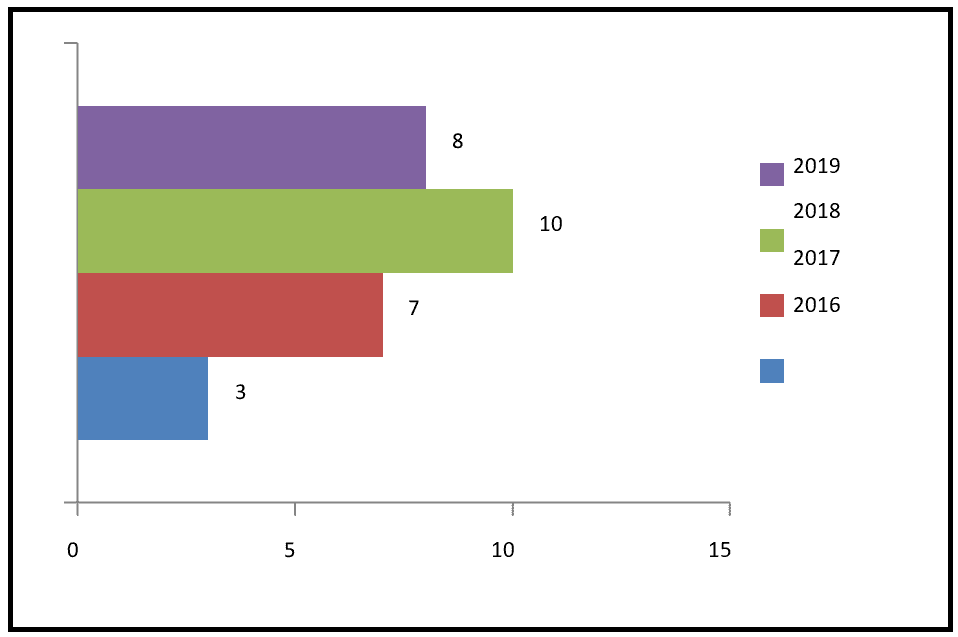
Let’s observe, based on the presented graph, that all students who participated in the research are from classes after 2016, the last period in which we found records of registered projects focused on training experiences in the laboratory.
It is worth noting here that during the years 2020 and 2021, there were no new admissions of students to the Mathematics Course at the State University of Bahia – Campus IX[6]. Another point to highlight, based on a report issued by SAGRES[7], is the low number of new students in this course, along with the significant dropout rate. For this reason, the classes to which we applied the questionnaires consist of a small number of students.
Another important question that we considered was about the experiences of teaching initiation by the respondents. Let’s see what they revealed about it[8]:
Graph 2 – Teaching initiation experiences
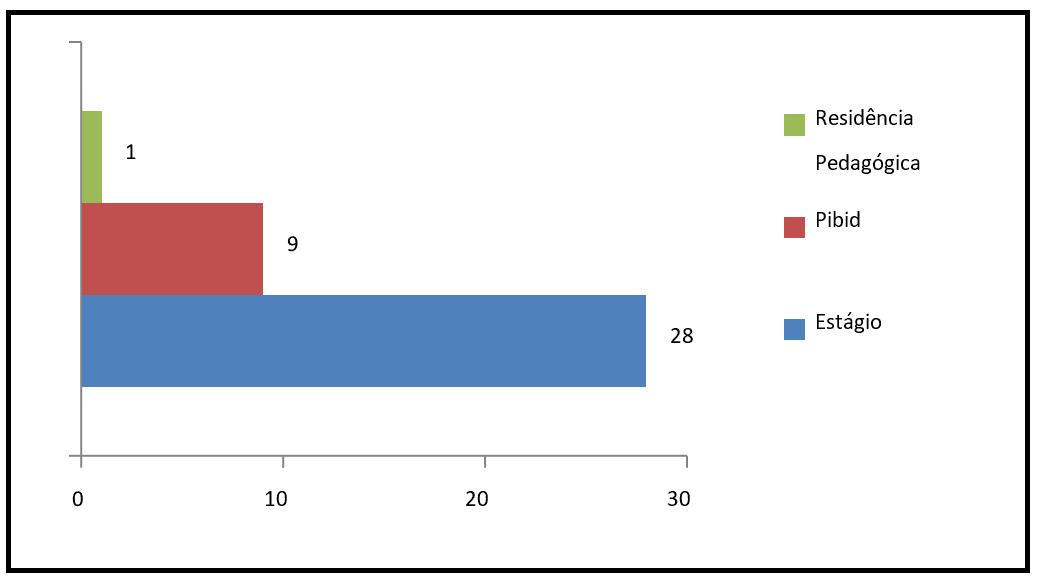
All twenty-eight have already experienced the Internship, nine participated in Pibid, and only one participated in Pedagogical Residency. It is worth noting that Supervised Internship is part of the curriculum of the Mathematics Teaching Degree at the State University of Bahia – Campus IX, thus being a mandatory curricular component.
It is noteworthy, based on the previous paragraph, that the formative itineraries proposed by the internship, Pibid, and Pedagogical Residency Program (PRP) allow the trainee, future teacher, to approach the space of the basic education classroom. This positively reflects the constitution of the teaching identity and the perception of the inseparable articulation between theory and practice (Lima; Pimenta, 2018). This, for us, and considering the context of this research, was a necessary condition to understand the implications of the work carried out in/with the Mathematics Education Laboratory for the training and future professional practice.
Based on the experiences provided by these formative itineraries, we were interested in learning about the use of games and/or other didactic devices. Let’s see what the respondents presented[9]:
Graph 3 – Use of games and other didactic materials
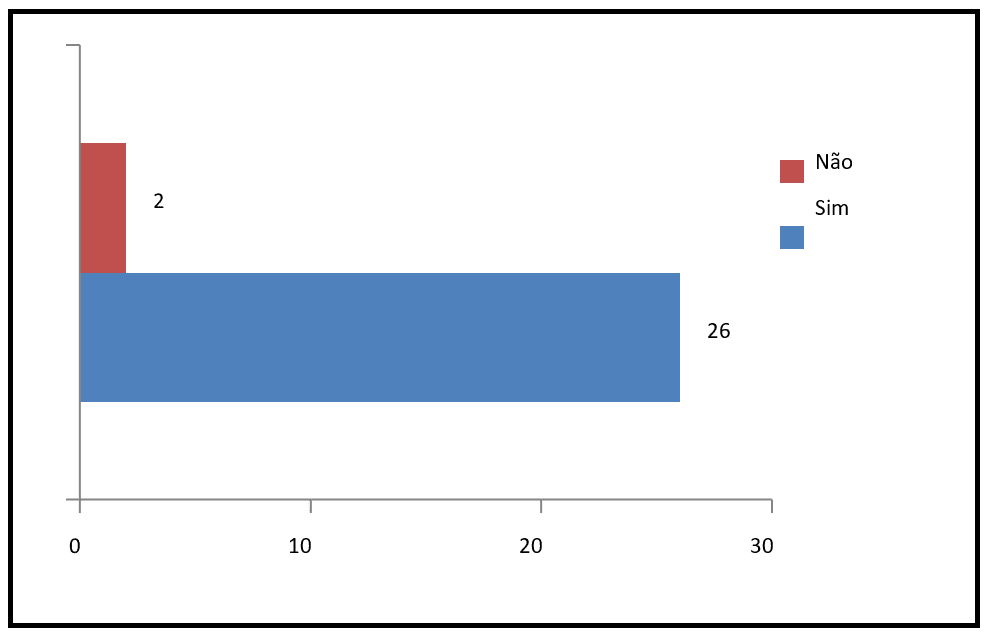
When asked about the use of didactic materials during the teaching practices they had already experienced, we noticed that the vast majority of respondents indicated that they did use them (26). In this sense, we can speculate that there is, therefore, a recognition on the part of the trainees regarding the importance of using these devices for the teaching-learning process, in agreement with what Silva, Souza, and Santos (2021) revealed. What we previously highlighted can be confirmed when asking them about the assistance of these tools in teaching Mathematics in the classroom[10]:
Graph 4 – Assistance of games and other materials in the teaching-learning process
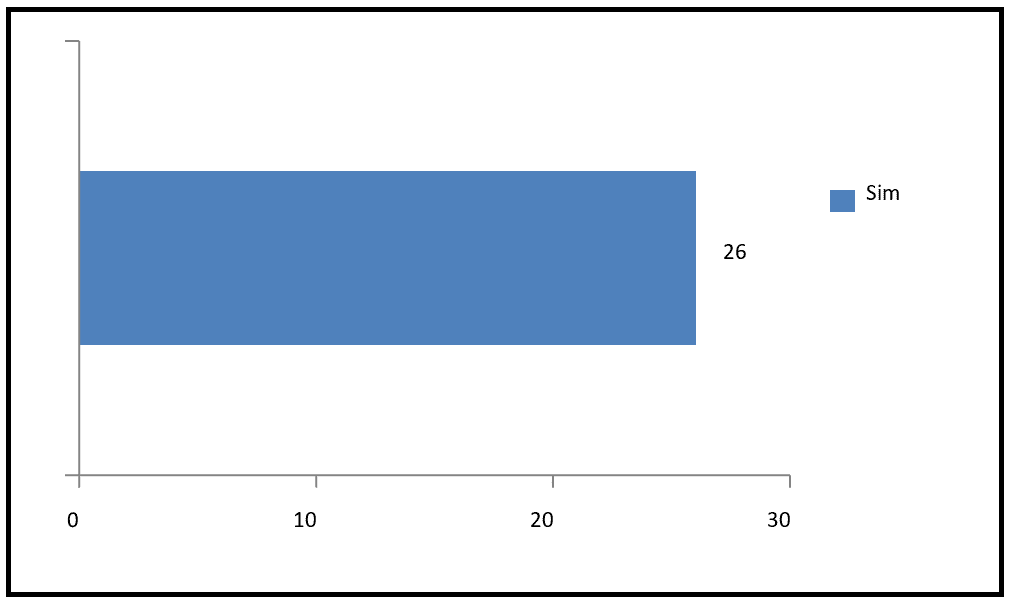
The 26 students who answered yes to the previous question indicated that they consider such materials to have assisted in the teaching-learning process. It can be inferred here that all those who used materials in the classroom believe that they contributed to this process.
According to Lorenzato (2010) and Silva (2014), didactic materials require reflection, especially concerning helping students in the process of improving mathematical knowledge. Developing methodologies using these materials, beyond meeting curriculum requirements, promotes self-reflection by the teacher. Thus, a space like the LEM is important as a permanent structure that continually seeks to develop the training of future teachers (Silva, 2020b).
It is necessary for the teacher to develop strategies and seek to promote the teaching of Mathematics in a way that redefines it and establishes it as a pleasurable journey of discoveries for students (D’Ambrosio, 1993). It is important to note that, according to the National Common Curricular Base – BNCC (Brasil, 2018), the use of didactic materials favors teaching and assists the teacher in their daily activities.
When asked about the possibility of using these devices in their future teaching practices, for example, we observe that all participants in the research (28) respond positively. See Graph 5 below[11]:
Graph 5 – Use of games and other materials in future teaching practices
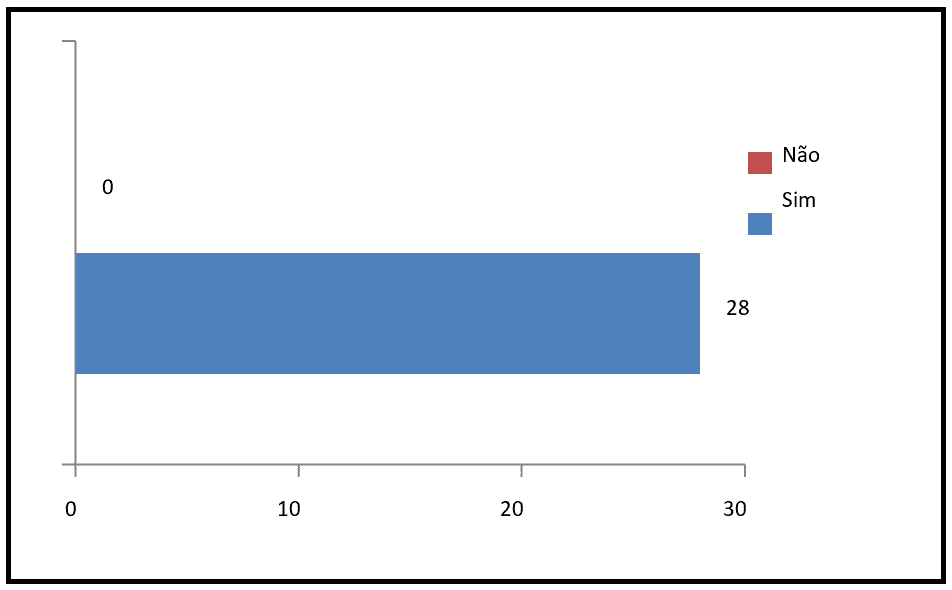
All of them stated their intention to use games and other materials in their future teaching practices, including those who have not yet used them in their classroom experiences. This, in a way, leads us to the understanding that these future teachers, as Silva (2014) suggests, recognize that the use of these materials contributes to the dynamics of teaching and learning Mathematics. This is also evident when we asked them about what they think of using these tools for teaching practice. See the data in Graph 6 below:
Graph 6 – Didactic materials for teaching Mathematics
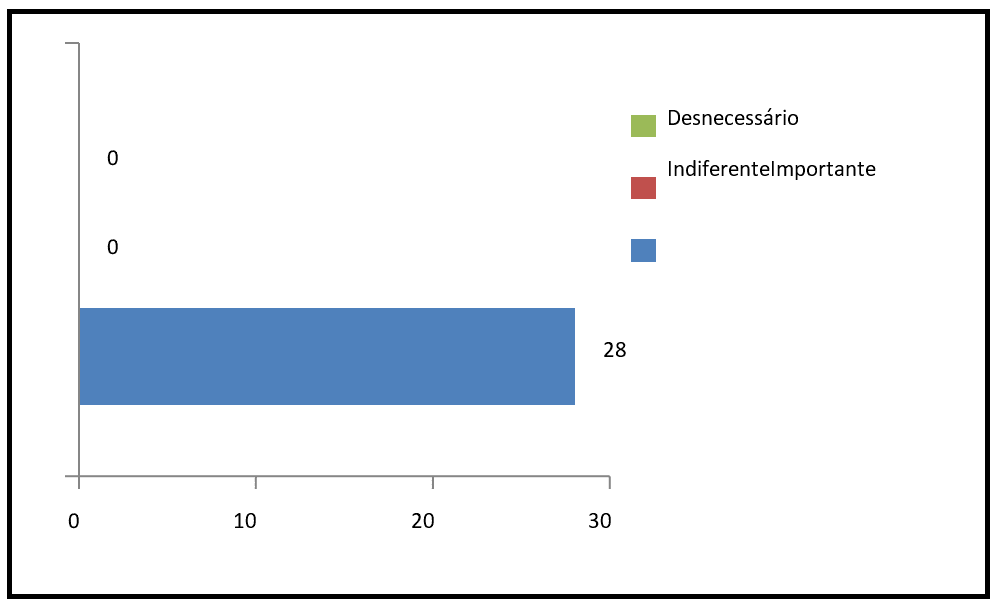
In this sense, it is important for us to consider that in teacher education courses, as evidenced by Lorenzato (2010), Mathematics Education laboratories can take on different perspectives: from material repositories to places of training and constitution of experiences that favor mathematizing. At UNEB, Campus IX, for instance, the LEM is also a mandatory course in the curriculum. Therefore, understanding the possibility of conducting work in an articulated manner between teaching (curricular component) and the physical space of the laboratory, as emphasized by Silva (2020b). Given this, we asked the research participants if the activities carried out in the Laboratory Teaching of Mathematics course contributed to the development of their teaching practices. Let’s see what they answered:
Graph 7 – Contribution of activities in the Laboratory Teaching of Mathematics course to teaching practice
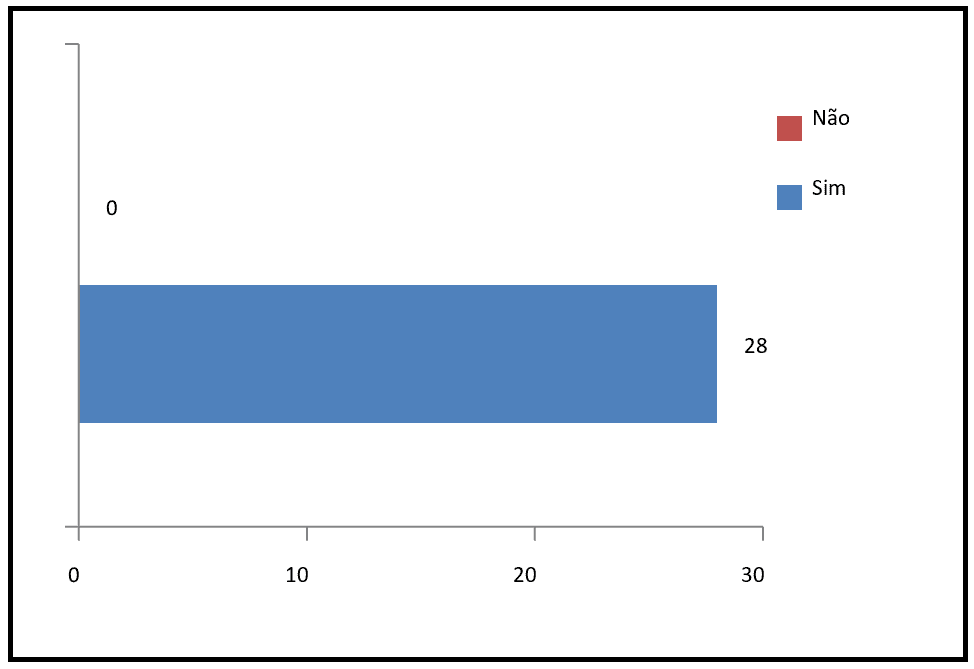
If we observe graphs 7 and 8, we will notice that the use of the LEM space did not occur in an articulated manner with the curricular component. We understand that, for this to happen, the teacher has the freedom to establish the formative itinerary and that, in this case, the syllabus does not link the work to the physical space of the laboratory. This decision would be up to the instructor, as evidenced by the responses provided by the participants. Let’s see what they pointed out in Graph 8 when asked about the use of LEM in any curricular component.
Graph 8 – Use of LEM space in curricular components
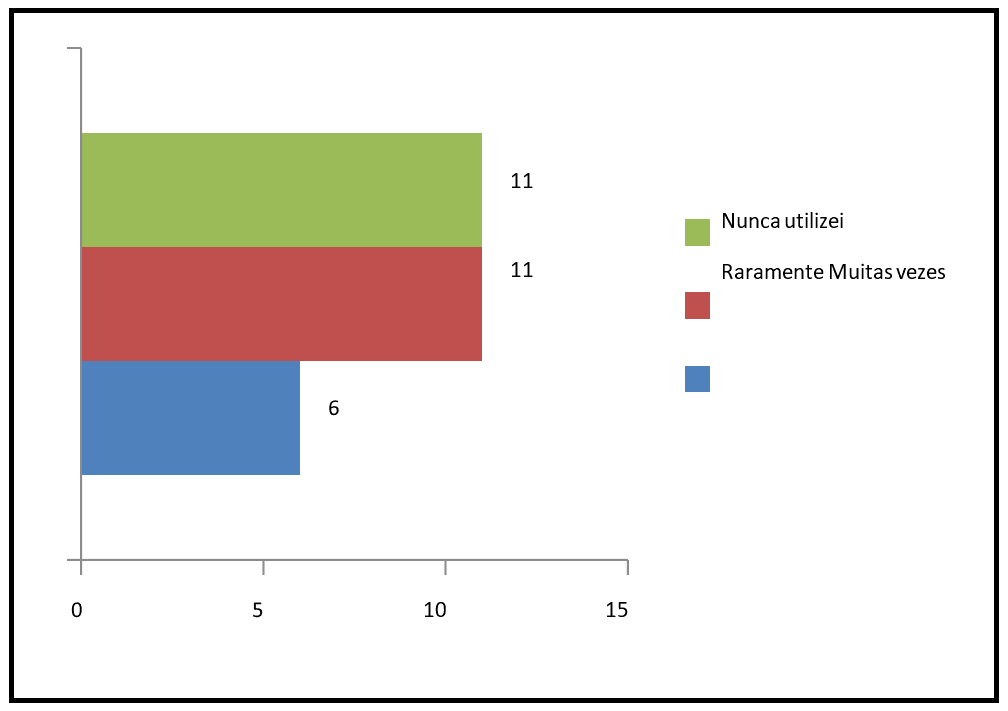
When we focus on the revealed data, it becomes evident that, for some of the respondents, there was no contact with the physical space of the LEM during any discipline, including the components of Mathematics Teaching Laboratory I and II[12]. This, to some extent, limits the formative itineraries, hindering a process of training and the constitution of knowledge that is necessary for teaching, especially considering the recommendation from curriculum advisors regarding the use of these materials. We understand that this data may also reflect the absence of proposals that guide a formative work that articulates the laboratory as an important space for teacher development. With that said, we wonder: how can we correctly use materials if, during our initial training, these materials were not adequately explored?
We know that, as emphasized by Lorenzato (2010) and Souza and Silva (2021), to work with various didactic materials, including potentially playful ones, training is necessary. This is primarily because the use of these devices mobilizes knowledge that is essential for teaching, such as the playful and pedagogical aspects of content (Souza; Silva, 2021). The LEM, in this sense, emerges as an opportunity for educators to experience situations using these materials, linking mathematical concepts with everyday life issues, thus realizing the joy of discovery and mathematical thinking (D’Ambrósio, 1993).
Therefore, we asked them about the component and formative activity developed in the LEM. Let’s see what the research participants responded:
Softwares matemáticos, para utilização dos computadores (P4[13], 2022).
Softwares matemáticos – uso dos computadores (P6, 2022).
Nas disciplinas de LEM e Estágio Supervisionado III, na produção de oficinas para trabalhar em turmas do ensino fundamental II (P7, 2022).
Softwares matemáticos – jogos virtuais e manuais; Estágio II – jogos manuais; Geometria Descritiva – jogos manuais (P10, 2022).
Softwares matemáticos – jogos virtuais e manuais; Estágio – jogos manuais sobre o assunto estudado (P11, 2022).
Geometria Descritiva, o plano (diedro) (P13, 2022). Geogebra, jogos matemáticos e kahoot (P14, 2022).
No componente de Laboratório II e no componente de Estágio III para utilização das oficinas que estão disponíveis (P15, 2022). Oficinas de matemática na disciplina de Laboratório de Ensino da Matemática (P16, 2022).
Laboratório, ensino das frações por meio de software (P17, 2022). Utilizamos as oficinas para o estágio III (P19, 2022).
Álgebra Linear I, utilização do geogebra (P25, 2022).
Laboratório de matemática, para desenvolver oficina (P 26, 2022). Softwares matemáticos – utilização dos computadores para explorar jogos (P27, 2022).
Na disciplina de Estágio III, desenvolvendo oficinas e jogos para serem aplicadas em sala de aula (P28, 2022).
Looking at the answers provided, we can see that the use of the laboratory, by some respondents (06), occurred to seek materials for internship activities, proposing the realization of workshops (Supervised Curricular Internship III – 04 respondents). This particular internship, the III, focuses on the experience of pedagogical workshops, and perhaps that is why there was an interest in relying on the materials offered by the LEM. However, beyond offering materials, as mentioned before, we advocate for the need for this place to go beyond the use of materials for the sake of it and to allow an understanding of its peculiarities and connections to the mathematics teaching-learning process.
In this context, prompted by the question, we asked about the perspectives generated from exploring the LEM for their teaching practices. Let’s see Graph 09 below, which addresses this question.
Graph 9 – Experiences lived in the LEM space and changes in perspectives on teaching practice.
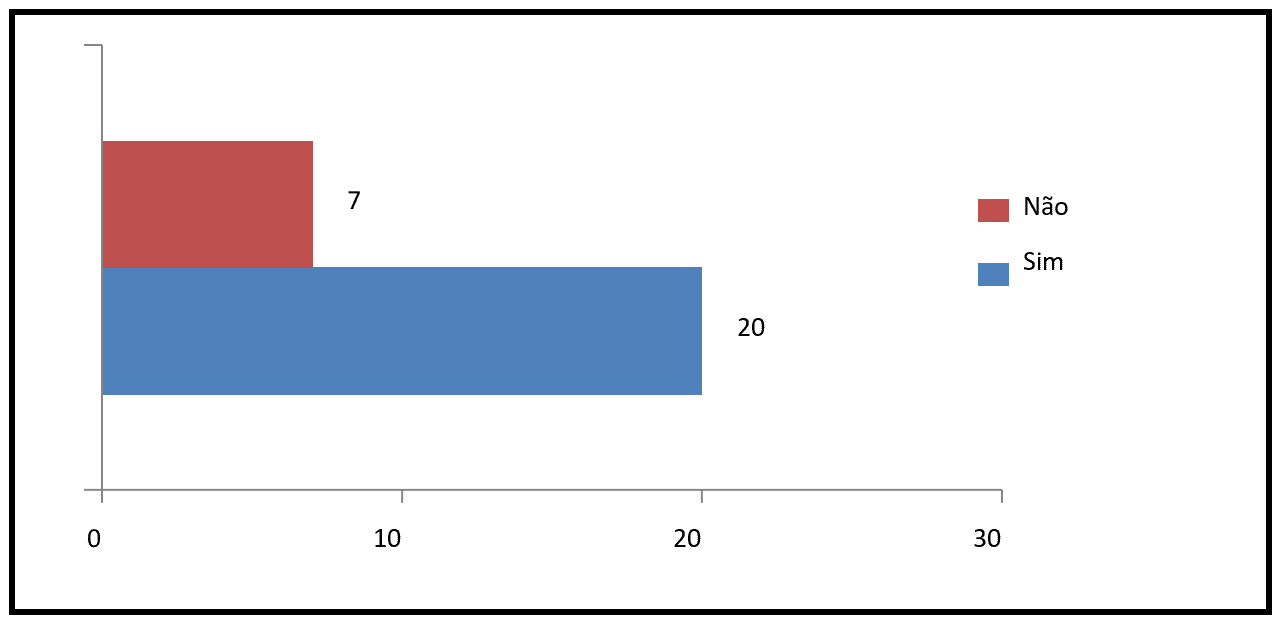
Regarding the experiences in the Mathematics Teaching Laboratory, the vast majority acknowledges that the LEM represented a formative space that broadens perspectives to support teaching practices. The data reinforces what is highlighted by Lorenzato (2010), Silva (2014), Silva (2020a, 2020b), Souza, and Silva (2021). It is worth noting that only one student did not respond.
The research considered it essential to understand the conceptions of Mathematics students about the LEM, as it is a space that is part of the institution and should be included in the formative itineraries of students. Therefore, we asked what conception they had about it.
Based on the given responses, we can see that the conceptions of LEM are diverse. Six students described it as a discipline/course component, given that the course in question has two curriculum components named Mathematics Teaching Laboratory I and Mathematics Teaching Laboratory II. Let’s see below:
Componente curricular onde se aprende a fazer planos de aula e planejamento (P1, 2022).
Enquanto componente curricular, é uma rica experiência para os futuros professores. Enquanto espaço de aprendizagem e ludicidade, é de grande contribuição para a aprendizagem (P4, 2022).
O LEM, como disciplina, aponta uma porção de oportunidade sobre o desenvolvimento a partir de sua aplicação (P5, 2022).
Se torna necessário, pois por meio dela aprendemos outras intervenções didáticas (P17, 2022).
Esta disciplina auxiliou no processo de ensino dos estágios e auxiliará quando for docente de Matemática (P19, 2022).
Disciplina de suma importância na construção da identidade profissional e auxilia na compreensão de conteúdos abstratos (P20, 2022).
Five participants in the research used the terms space/environment/location to define the Mathematics Education Laboratory, as we reveal below:
É um espaço importante para a formação acadêmica, visto que, através dela é possível desenvolver oficinas, trabalhar elas e posteriormente levar para a sala de aula (P7, 2022).
Ambiente em que o ensino da matemática ocorre para promover uma aprendizagem significativa, onde os alunos são o centro do processo de ensino-aprendizagem (P18, 2022).
A utilização desse espaço é muito importante (P21, 2022).
É um local propício para que os alunos conheçam como a ludicidade atrelada ao ensino da matemática pode ajudar na aprendizagem deles (P23, 2022).
É um espaço importante para o desenvolvimento das atividades lúdicas (P27, 2022).
We perceive in the answers provided by eight participants in the study that the LEM is signified by them as a place where materials and resources guiding the teaching-learning journey of Mathematics are stored. Some responses link the use of LEM to the paths of initial training.
Considerando que o professor precisa diversificar as metodologias para o ensino, o LEM é um auxiliar muito importante, já que contém vários recursos didáticos (P6, 2022).
Auxilia no processo de ensino-aprendizagem, porém, precisa ser mais utilizado pelo curso nas disciplinas (P9, 2022).
O Laboratório do Ensino da Matemática é de suma importância para que o docente presencie na prática o que está estudando (P10, 2022).
O laboratório de ensino de matemática é de suma importância para a formação e prática docente, pois é um auxílio maior no repasse e na compreensão dos conteúdos estudados (P11, 2022).
Necessário, principalmente para facilitar a visualização dos objetos matemáticos (P13, 2022).
É importante para aprofundar na aprendizagem de matemática, utilizando jogos e computadores que lá são oferecidos (P14, 2022). É de extrema importância para trabalhar as aulas dinâmicas (P25, 2022).
Importante para aprender as atividades lúdicas, para utilizar na docência os materiais disponíveis (P26, 2022).
Seven participants view the LEM as an important place for rethinking teaching, considering it a space that influences and contributes to the construction of mathematical knowledge. In their responses, we observe that they recognize the formative role of the laboratory:
O Laboratório de Ensino de Matemática é uma ferramenta importante para auxiliar o plano de graduação a preparar uma aula dinâmica e lúdica (P2, 2022).
Prática pedagógica que visa tornar a sala de aula um lugar cada vez mais dinâmico e atrativo para o estudante, potencializando cada vez mais o ensino-aprendizado dos alunos (P3, 2022).
É necessário no ensino-aprendizagem, pois é uma maneira de atrair a atenção do discente durante a aplicação do objeto de conhecimento, principalmente, quando faz relação com o dia a dia dos alunos (P8, 2022).
O laboratório propõe e apresenta um novo olhar para o ensino e aprendizagem de Matemática (P12, 2022).
O laboratório de Matemática é de fundamental importância, tendo em vista que por meio dele se torna possível desenvolver melhores estratégias didáticas utilizando a ludicidade (P15, 2022).
O laboratório tem como função a experimentação e o desenvolvimento do conhecimento científico (P16, 2022).
Importante para construção de conhecimento matemático de forma lúdica (P24, 2022).
It was not possible to categorize the response of two participants, as they did not clarify their conception, answering only “Important” (P22, 2022) and “I find it very important. I advocate the idea that we should explore it more” (P28, 2022).
From this understanding, it is notable that students in the Mathematics Teaching program at UNEB Campus IX present different conceptions about the LEM. This is possible, as Oshima and Pavanello (2010) point out, because the LEM can have different purposes depending on the teacher’s needs. We also notice in their responses the construction of a relationship between the use of the space and the Basic Education classroom. However, we do not perceive, when looking at the registered projects that were experienced in the LEM, how this articulation occurred.
When asked about the influence of the LEM on their teacher training, three participants (P21, P22, P24) responded that there was no influence, as they never used the LEM. Another three participants (P23, P25, P28) considered that there was little influence and also added that the space should have been explored more. Seventeen participants indicated contributions of the LEM to their training. Among some responses, we have: “thinking in new ways of teaching” (P26, 2022); “reassessing teaching identity” (P18, 2022); “playfulness as a pedagogical tool” (P20, 2022); “development of workshops” (P19, 2022). While five participants responded that the LEM influenced a lot and in a positive way. These responses were:
Apesar de ter sido online, foi muito importante para nossa formação, pois percebemos que através das atividades lúdicas, os alunos perdem o medo da Matemática tradicional e despertem o interesse pela disciplina (P8, 2022).
Muita, pois foi um dos principais contribuidores para o ganho de experiência (P7, 2022).
Influenciou bastante. Durante as oportunidades de estar em sala de aula eu procurei utilizar os jogos e oficinas desenvolvidas na disciplina LEM (P6, 2022).
Trouxe uma grande contribuição que possibilita uma formação mais eficiente e cheia de expectativas positivas (P5, 2022).
Obtive rica experiência acerca do LEM, visto que pude perceber o quão importante é fazer uso da ludicidade nas aulas (P4, 2022).
Finally, we consider it valid to inquire about the LEM and the teacher training program. We asked if they considered the existence of the LEM necessary in teacher training programs. All participants answered yes. Some justifications include:
O laboratório vai auxiliar o aluno de graduação durante seus estágios para quando ele for aplicar atividades lúdicas possa ter uma ideia de como fazer e ter o material (P2, 2022).
Enquanto professores, precisamos lidar melhor com toda a gama de materiais que podem auxiliar e facilitar nosso trabalho (P4, 2022).
O LEM proporciona uma importante etapa das experiências e contribui para uma qualificação contextualizada (P5, 2022).
É o momento em que os formandos em licenciatura se deparam com uma nova metodologia mais dinâmica, lúdica, e que mostra que ensinar Matemática vai além de usar somente quadro e livros didáticos. O futuro professor pode deixar de ser tradicional, para ser um professor diferenciado (P8, 2022).
É necessário mudar a forma antiga de dar aulas utilizando apenas o quadro, o livro e o giz. É preciso diversificar, trazer novas formas de ensinar, que sejam práticas e divertidas, e que em consequência, promovam a aprendizagem dos conteúdos (P9, 2022).
Os objetos matemáticos possuem uma característica de visualização abstrata. LEM ajuda consideravelmente a visualizar tais objetos de forma mais concreta. Como futuros docentes, é necessário saber da necessidade de simplificar e participar do processo de ensino ativamente, reconhecendo que existe uma complexidade na aprendizagem da Matemática (P13, 2022).
Partindo do laboratório novas experiências podem ser desenvolvidas, além disso, a partir dos materiais que ali estão presentes pode proporcionar uma nova maneira de ensinar Matemática (P15, 2022).
É um espaço que possibilita experiências com novas metodologias e proporciona desafios ainda na graduação. Sendo assim, é um importante espaço de formação (P18, 2022).
Esse espaço permite o futuro professor desenvolver habilidades para trabalhar o conteúdo de forma mais dinâmica futuramente, na sua prática docente (P21, 2022).
É um local que se usado corretamente, pode ajudar os licenciandos a conhecer o meio lúdico para assim ensinar o conteúdo de Matemática (P23, 2022).
Agrega ao licenciando uma nova visão sobre Matemática, e um novo modelo para ensinar (P26, 2022).
Upon analyzing the responses, we perceive a balance regarding the importance of the LEM. Regardless of their direct contact with it, the results highlight the students’ recognition of the LEM’s significance as a space that fosters reflections on teaching and learning tools to be used during their teacher training program, potentially contributing to their mathematics classes.
5. FINAL CONSIDERATIONS
In light of the discussions in the theoretical framework of this research, we perceive that the LEM (Laboratório de Educação Matemática) serves as an important space, bringing together various resources to be used in the process of teaching and learning mathematics. In addition to motivation, it allows for the development of aspects such as observation, investigation, analysis, questioning, reflection, and validation of results in planned didactic situations elaborated by the teacher.
Therefore, it is crucial for such a teacher to have knowledge of how to explore the LEM in the school environment, necessitating training that enables this not only during initial education but throughout the teacher’s career. In this work, it was noted that the LEM, in the Mathematics Teaching program at Campus IX of the State University of Bahia, had activities and registered projects in academic systems until the year 2016, as reported by the Department’s NUPE (Núcleo de Pesquisa e Extensão).
We understand that the conceptions future teachers have about the Mathematics Education Laboratory (LEM) are diverse, and this applies to the experiences provided. It is important to consider that the students participating in the study come from different classes, from 2016 to 2019. For them, the LEM can be:
i) a curricular component;
ii) a physical space that gathers various didactic materials;
iii) a place of formation;
iv) a promoter of mathematical learning through the use of materials.
It is acknowledged that there are various ways to conceive this place, and the initial training program needs, through training and exploration itineraries of the LEM, to reframe some of these conceptions. Considering the reality of a future mathematics teacher, it is crucial to understand the LEM beyond a place that gathers didactic and potentially playful materials. The LEM needs to be seen as a promoter of mathematical learning, as a dynamic space articulated with a specific context of mathematizing. Limiting its understanding and not promoting experiences reveals a negative point, hindering its construction in school spaces and subsequent utilization.
Thus, based on the results of this investigation, it is evident that there is an extrapolation of the understanding of the LEM not only as a physical space but as a guiding concept for the formation, practice, and professional development of mathematics teachers.
Regarding the data produced in this research, it becomes clear that the reflections of the activities carried out in this space, from 2016 onwards, have been incipient, especially when considering what is officially carried out and registered in the institution’s planning systems. This, to some extent, impacts the initial training and practice in the classroom with mathematics.
Reflecting on the research and the history of the LEM at the university, it can be inferred that most of the interviewed students believe that the use of diverse didactic materials can play a transformative role in teaching and learning; as well, most believe that the LEM is important for training teachers to handle these materials.
However, in the responses provided, there is a limitation in understanding the LEM, linking it only as a space present in the university. The limited exploration of the LEM space during the period of the surveyed classes may contribute to this limitation.
Finally, despite all the benefits that the LEM can offer to education students, it is not clear from an institutional perspective whether it has been explored as expected from 2016 to 2022. We emphasize the need for investment and involvement from the university as a whole, especially from faculty and students.
REFERENCES
BAHIA. Secretaria da Educação do Estado da Bahia. Documento curricular referencial da Bahia para educação infantil e ensino fundamental. Rio de Janeiro: FGV Editora, 2019.
BRASIL. Ministério da Educação. Base Nacional Comum Curricular. Brasília, 2018.
CURY, H. N. Concepções e crenças dos professores de matemática: pesquisas realizadas e significado dos termos utilizados. Bolema. Boletim de Educação Matemática, Rio Claro, Unesp, 1999. 29- 43.
D’AMBROSIO, B. H. Formação de professores de matemática para o século XXI: o grande desafio. Pro-Posições, v. 4, n. 1, p. 35-41, 1993.
GIL, A. C. Métodos e técnicas de pesquisa social. 5. ed. São Paulo: Atlas, 1999.
GIL, A. C. Como elaborar projetos de pesquisa. 4. ed. São Paulo: Atlas, 2007.
GIL, A. C. Como elaborar projetos de pesquisa. São Paulo: Atlas, 2002.
GIRALDO, V. Formação de professores de matemática: para uma abordagem problematizada. Cienc. Cult, São Paulo, v. 70, n. 1, p. 37-42, jan. 2018.
KLEIN, F. Matemática Elementar do Ponto de Vista Superior. Volume II: Geometria. Lisboa: Sociedade Portuguesa de Matemática, 2009.
LIMA, M. S. L; PIMENTA, S. G. Estágio e docência. São Paulo: Cortez, 2018.
LORENZATO, S. (org.). O Laboratório de Ensino de Matemática na formação de professores. Campinas, São Paulo: Autores Associados, 2010, p. 3-37 (Coleção Formação de Professores).
LÜDKE, M.; ANDRÉ, M. E. D.A. Pesquisa em Educação: abordagens qualitativas. São Paulo: EPU, 1986.
OSHIMA, I; PAVANELLO, R. O laboratório de ensino de matemática e a aprendizagem da geometria. Dia-a-Dia Educação, 2010. Disponível em: <http://www.diaadiaeducacao.pr.gov.br/portals/pde/arquivos/232-4.pdf>. Acesso em: 23 abr. 2023.
SANTOS, F.S; CARDOSO, M. C. O lúdico e a formação docente na universidade. Realize, Campina Grande-PB, 2013.
SHULMAN, L. S. Conhecimento e ensino: Fundamentos para nova reforma. Cadernos Cenpec, São Paulo, v. 4, n. 2, p. 196-229, dez. 2014.
SILVA, A. J. N. A Extensão Universitária como Eixo Articulador na Formação de Professores: Ampliando o Olhar Acerca das Práticas de um Laboratório de Educação Matemática localizado na Universidade do Estado da Bahia. In: DENDASCK, C. V.; SOARES, A. F.; DIAS, C. A. G. M.; RODRIGUES. M. A. C. (Org.). Ciências Humanas: atualização da área. São Paulo: Núcleo do Conhecimento, 2023, v. 01, p. 76-85.
SILVA, A. J. A Ludicidade no Laboratório: considerações sobre a formação do futuro professor de matemática. Curitiba: CRV, 2014.
SILVA, A. J. N. Laboratório de Estudos e Pesquisas em Educação Matemática do Campus VII da UNEB: espaço de formação e desenvolvimento do conhecimento lúdico e pedagógico do conteúdo. In: VIEIRA, A. R. L.; SILVA, A. J. N. (Org.). O futuro professor de matemática: vivências que intercruzam a formação inicial. Porto Alegre: Editora Fi, 2020a, p. 36-59.
SILVA, A. J. N. O Laboratório de Educação Matemática e a Formação Inicial de Professores de Matemática. Revista Internacional Educon, v. 01, p. e20011001, 2020b.
SILVA, A. J. N.; SOUZA, I. S.; FONSECA, S. S. O laboratório de educação matemática e suas potencialidades lúdico-pedagógicas: algumas experiencias itinerantes. Research, Society and Development: São Paulo, v. 10, n. 2, p. 1-9, 2021.
SILVA, A. J. N.; SOUZA, P. S. S; SANTOS, A. S. S; MIRANDA, C. A. O Laboratório de Estudos e Pesquisas em Educação Matemática da UNEB e o constituir-se professor pesquisador. Com a Palavra, o Professor, v. 8, p. 246-267, 2023.
SOUZA, P. S. S.; SILVA, A. J. N. da. Grupo de Estudo e o Movimento de Ressignificação da Concepção de Ludicidade: Uma Experiência no Lepem da UNEB. Brazilian Journal of Policy and Development, v. 3, p. 43-57, 2021.
UNEB. Projeto de Reconhecimento de Curso de Licenciatura em Matemática. UNEB, 2017.
APPENDIX – FOOTNOTE
4. Fictitious names were used.
5. Question 1 asked for the year of enrollment in the course.
6. The situation occurred due to the COVID-19 pandemic.
7. Portal that manages the academic life of UNEB students.
8. Question 2 asked: Have you already experienced any teaching practice? If yes, please indicate which one(s):
9. Question 3 asked: During any of these teaching practices, did you use games and potentially playful activities?
10. Question 4 had the statement: – If yes, do you consider that such activities helped in the teaching-learning process?
11. Question 5 asked: Do you intend to use games and playful activities in your future teaching practices?
12. Laboratory of Mathematics Teaching I (45h) Syllabus: Presents and discusses problem situations in the process of teaching and learning Mathematics in Elementary School, diagnosed from classroom practices, with the theoretical support of the assumptions of Mathematics Education. Analyzes, discusses, and develops proposals for planning, assessment, didactic resources, and other instruments of intervention in the teaching and learning process of Mathematics in this segment of education; Laboratory of Mathematics Teaching II (45h) Syllabus: Presents and discusses problem situations in the process of teaching and learning Mathematics in High School, diagnosed from classroom practices, with the theoretical support of the assumptions of Mathematics Education. Analyzes, discusses, and develops proposals for planning, assessment, didactic resources, and other instruments of intervention in the teaching and learning process of Mathematics in this segment of education.
13. In order to preserve the identity of the research subjects, as previously mentioned, they will be identified by the initial P (for participant), followed by numbers from 1 to 28, according to the order of questionnaire resolution.
14. Question 9 had the statement: Did the experiences in the Mathematics Teaching Laboratory (LEM) bring a new perspective on teaching practice?
[1] Advisor. Ph.D. in Education from the Federal University of São Carlos (UFSCar) and Master’s in Education from the University of Brasília (UnB). ORCID: https://orcid.org/0000-0002-7283-0367. Currículo Lattes: http://lattes.cnpq.br/5104791370402425.
[2] Graduated in Mathematics from the State University of Bahia. ORCID: https://orcid.org/0009-0007-9789-7377. Currículo Lattes: http://lattes.cnpq.br/0300178512308147.
[3] Licensed in Mathematics from the State University of Bahia. ORCID: https://orcid.org/0009-0002-0608-4236. Currículo Lattes: http://lattes.cnpq.br/6083965440715295.
Received material: December 1, 2023.
Peer-reviewed material approved: December 21, 2023.
Edited material approved by the authors: January 26, 2024.















